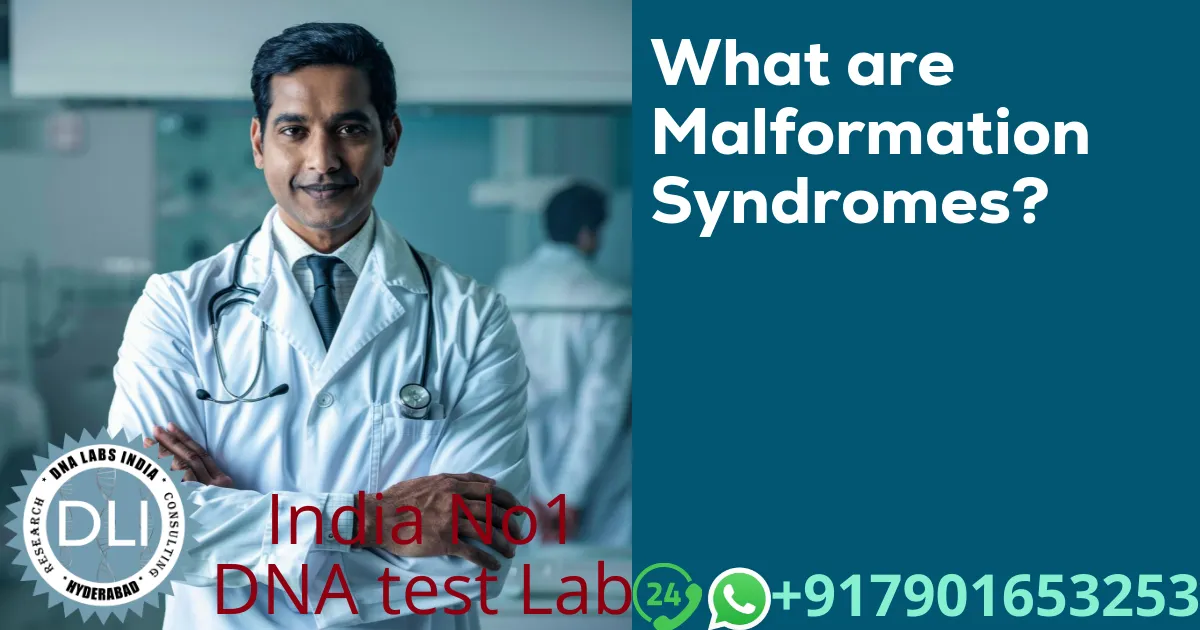Malformation Syndromes:
It is important to establish aetiology, where possible, for practical reasons of genetic counselling, but some of these disorders are proving to be of great importance in basic research, particularly where specific genes are involved. As the techniques of molecular genetics are applied to dysmorphology, many more syndromes will prove useful as models for disordered developmental processes that can be analysed at the molecular level and for which new, rational treatments may be on the horizon.
Chromosomal syndromes
While the major chromosomal disorders have been recognised for many years (e.g. trisomy 21, trisomy 13), clinical cytogenetics has delineated many others that involve parts of specific chromosomes (e.g. 22q11.2, 22q13.3 or 1p36 deletion syndromes), or mosaicism for entire chromosomes (e.g. mosaic trisomy 8). Syndromes of this type involving an autosome are usually accompanied by mental retardation, but in many cases, the combination of physical abnormalities is sufficiently specific to allow a presumptive diagnosis before the chromosome constitution is known. While most cases are sporadic, it is important to recognise the small proportion where an unaffected parent is the balanced carrier of a structural rearrangement, is mosaic for an anomaly or manifests the condition very mildly.
Microdeletion syndromes
In the microdeletion syndromes, individual components may be the result of the deletion of a single gene or of several, contiguous genes; the combination of clinical features has been a most valuable clue to the localisation and relative ordering of the loci involved. The deletions involved may be visible, especially if the high-resolution cytogenetic analysis is used, but will often only be apparent if more sensitive, molecular techniques are employed, such as aCGH, quantitative polymerase chain reaction (qPCR), FISH or multiplex ligation-dependent probe amplification (MLPA).
A development of considerable importance is the recognition that a significant proportion of cases of congenital heart disease result from microdeletions of 22q11.2, with a considerably broader and often more subtle range of features by comparison with the originally recognised categories of the DiGeorge and velocardiofacial syndromes.
Since the phenotype in some microdeletions can vary, sometimes being relatively mild and compatible with reproduction, the study of parents (clinical as well as chromosomal) is of particular importance. When a parent is affected, the child will often be affected more severely. This can be for two reasons: (1) more mildly affected cases are more likely to become parents, and (2) the affected parent may be mosaic for the disorder, with the child being fully affected.
Teratogenic syndromes
In teratogenic syndromes, the factor may be infective (e.g. rubella), drug-related (e.g. anticonvulsants) or metabolic (e.g. maternal phenylketonuria). The number of well-documented and specific syndromes in the group (e.g. maternal warfarin) remains small. Some may closely mimic genetic syndromes, so it is important not to assume a teratogenic cause without good evidence. Conversely, some genetic syndromes may easily be mistaken for intrauterine infections (e.g. recessively inherited microcephaly with calcification of the basal ganglia).
Syndromes due to the disordered function of specific
genes in development
The possibility of identifying the specific genes responsible for individual malformation syndromes has become one of the most important and rapidly evolving fields of medical genetics and has immediate practical consequences. It clearly reinforces the need for accurate clinical classification of dysmorphic syndromes, as well as provides the possibility of early prenatal diagnosis for families. In the past, the identification of disease loci was principally achieved by gene mapping, positional cloning and mutation searches in plausible candidate loci already known to be important in development. Now, the genetic factors underlying developmental defects are sought more often by genome-wide methods.



